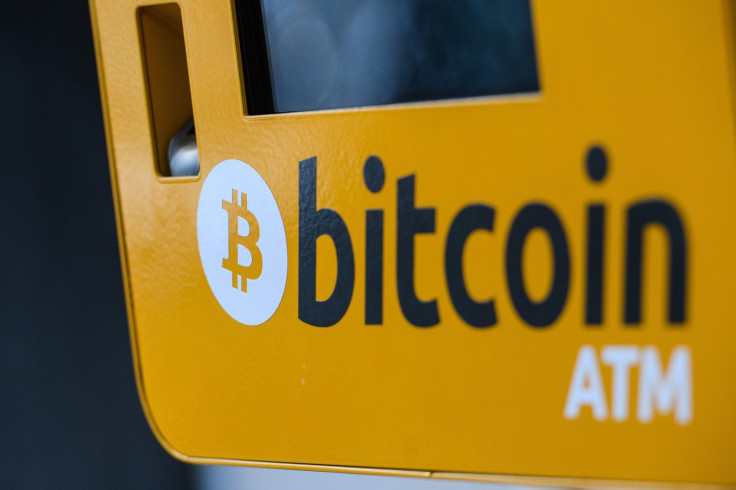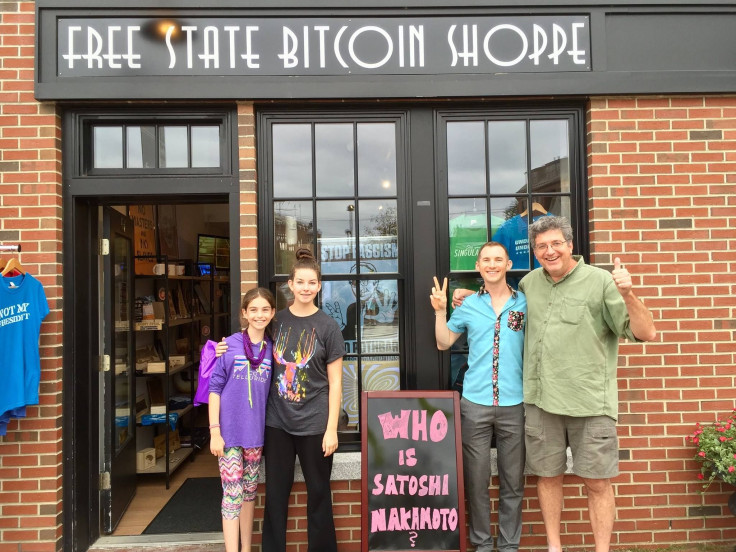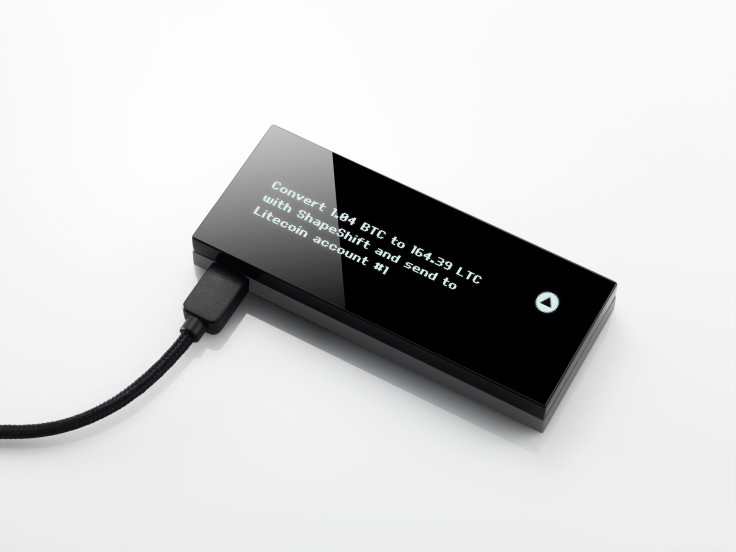How To Buy Bitcoin, Even If You Aren't Tech-Savvy

The first step of buying bitcoin is building up your free media library. It is watching YouTube videos by Andreas Antonopoulos and reading blog posts by Jameson Lopp. Save a PDF of the original Satoshi Nakamoto white paper that first invented the idea of bitcoin. You’ll read this repeatedly in the future as your understanding deepens. Anyone who tells you they cracked the code for a foolproof, simple or easy way to join the cryptocurrency boom is lying. It takes effort, even if it isn't hard.
I’m extremely lazy when it comes to my own personal finances. Plus, I am the least tech-savvy blockchain reporter on the planet. I routinely curse at electronic devices for thwarting me at every turn. So you can take it from me: You don’t need to be a technologist to join the bitcoin community. However, it is a journey best taken with baby steps and several glasses of wine.
1. Learn the lingo.
Your first task as a new bitcoin experimenter is to learn the language of cryptocurrency. Otherwise, it will be like going to buy a car without any idea what a motor, wheel or tire is. Knowing you want "bitcoin," or "truck," isn't enough. Doing research before you buy is the only way you'll be able to use these new services, assets and products securely. YouTube is full of free tutorials. Reddit users are uncharacteristically helpful when it comes to cryptocurrency newbies. The sharpest minds in the cryptocurrency industry often tweet their insights and advice for free, so there’s no need to pay for a class or advisor. Places like the the Free State Bitcoin Shoppe in New Hampshire offer free consulting at the retail branch.

If you are a woman, join one of the many closed Facebook groups for women in blockchain to enjoy all the perks of social media without any gross comments. (Compared to other women’s groups I’ve participated in for years, the crypto-savvy women’s groups have so far proven to be some of the most constructive and supportive networks I’ve ever seen.)
Regardless of your gender or location, I highly recommend going to a cryptocurrency meetup event IRL. Whether it is an Ethereum event, a bitcoin meetup or a monero users' party matters less than the fact that you meet experienced users face to face. At my first bitcoin meetup, I probably understood one out of every 10 words the speaker uttered. Usually it was the prepositions. But I also met several people who answered some of my most basic questions. Then they walked me through setting up my first exchange account (more on that later).
There isn’t a bitcoin help hotline the way your bank or PayPal account offers customer support. So building up a foundation of online resources and mentors is the best way to prepare yourself for success. Everyone makes mistakes. In the world of cryptocurrency, you’ll probably lose money if you don’t prepare before you buy.
2. Get a cryptocurrency wallet.
The second step is getting a wallet. Mobile apps such as Bread and Trezor are free. Hardware wallets like Trezor and KeepKey are relatively affordable computer products, almost like a USB stick. There are countless wallet choices.

This is the wallet where you will put the bitcoin you buy. If you don't put your cryptocurrency in a wallet, it is as if you are walking around with thousands of dollars in your hand. Hackers or corporate glitches might snatch your bitcoin away, even from wallets on exchange platforms.
Make sure to write down all your account information, including seed words and keys, in multiple places so you won't lose them. People have reportedly lost almost 4 million bitcoin, in part because some of them misplaced the little piece of paper (or email) with their account information. Only after you've done all your research about which secure wallet works best for you, should you set out to purchase your first bitcoin.
3. Get some bitcoin. Here are three different ways to do it.
Some people might open an exchange account at Kraken, bitFlyer or Coinbase. This is a great way to test your patience. Most exchange platforms offer a terrible user experience, meaning there is a lot of paperwork to confirm your identity, a complex interface and frequent outages when anything interesting happens in the broader cryptocurrency market. It’s so bad that some bitcoin users are developing websites to tally daily complaints and malfunctions.
I personally have had a Coinbase account for several months and never once gotten it to work no matter what I’ve tried. I’ve used every possible method of reaching out for support. So far I've only received automated messages repeating the same information already available on the website’s help page. I’ve heard horror stories of bitcoin users who lost hundreds or thousands of dollars on Coinbase; It just disappeared. They were also unable to get any type of customer service. To be fair, Coinbase's support is pretty standard. Most cryptocurrency exchanges have almost no customer service staff of any kind for regular users. Accredited investors have a few more options. For the rest of us, cryptocurrency exchange-induced breakdowns are the emotional hazing process of joining the bitcoin community.
To make matters worse, cryptocurrency exchanges worldwide are sometimes hacked or shut down. These platforms are not legally required to reimburse users. So most hacking victims never see their tokens again. Sure, most of the millions of bitcoin users who buy cryptocurrency do so through popular exchange platforms. Coinbase alone reportedly has more than 11.7 million users. But there are much easier ways to get your first bitcoin. For starters, you can barter with your new digital neighbors, those people you meet online and at meetup events.
You can sell stuff or offer freelance services in exchange for cryptocurrency. That may sound overly optimistic, because cryptocurrency prices are rising every day. Yet Ethereum creator Vitalik Buterin earned his first bitcoin stash as a teenager writing blog posts. I received my first cryptocurrency stashes this year by swapping small amounts of tokens and food with more experienced users. Cryptocurrency veterans are often excited by the opportunity to use tokens as payment in their daily lives. Once you have a digital wallet, anyone can send you bitcoin without needing to exchange personal information. All they need is your wallet address.

If you have a mobile wallet on your phone, the swap can be as simple as scanning a QR code. Feel free to use an exchange platform to buy bitcoin with your credit card if you want. But if you keep a wallet yourself instead of holding your tokens on an exchange, you can also acquire bitcoin on your own. Plus, you have to pay a transaction fee every time you move your cryptocurrency, even from your exchange account to your own personal wallet. Transaction fees vary wildly, sometimes costing dozens of dollars just to send a little bit of money. It depends on how crowded the network is when you transact. The easiest way to buy bitcoin without an exchange or a friend is an ATM, such as Coinme machines. There are more than 2,000 cryptocurrency ATMs nationwide.
Over the Christmas break, I made a bet with my dad that I could quickly buy (not swap) cryptocurrency without any tech-savvy chops. It took several hours of trying two bank accounts on platforms such as Coinbase and Glidera before we gave up. One didn’t serve New Yorkers (thanks to a silly state law that makes it hard for companies to offer local services related to bitcoin), plus it didn’t work on Android devices. The third attempt failed because my dad’s California credit union doesn’t let credit card holders work with cryptocurrency exchange platforms. We Googled where to find the nearest bitcoin ATM and ended up in an abandoned, cowboy-themed bar with a few homeless people but no bitcoin.
My dad started smirking. I went old school, picking up the phone. I called BitcoinPlug, a bitcoin ATM provider. A real live human answered the phone and texted me directions to a nearby ATM in the suburbs south of Los Angeles. It stood in a tiny, dirty liquor store with bars on the windows. The bright orange ATM was impossible to miss. My dad was still smirking, but not for long.

The transaction fees for both the network and the ATM itself were outrageous. Out of $100, I received less than $49 worth of bitcoin. Exchanges usually have much lower fees than ATMs. For example, compare Coinbase’s four-ish percent to BitcoinPlug’s 10 to 20 percent fee per purchase. That’s the fee companies charge on top of the mandatory network fee!
Regardless, it was the ATM that helped me win this bet. Support staff was easy to reach; I wasn’t ever put on hold! It took a minute to get directions. Once we got there, it took literally 30 seconds to scan my phone’s mobile wallet, feed dollar bills into the machine like a regular ATM, then instantly receive bitcoin. I didn’t have to type in a long, complicated wallet address or verify my government ID and bank account.
All things considered, there are three main ways to buy your first bitcoin. The cheapest and most fun way is through commerce with the bitcoin community. Exchanges offer the widest variety of tokens, while ATMs offer the least complicated way to get digital currency on the go. Whatever you choose, buying a little cryptocurrency is just your first stop on a long road full of new possibilities. Welcome to the club!
Editor’s note: This is not investment advice. Buying any cryptocurrency, including bitcoin, is extremely risky. No one should invest more in cryptocurrency than they can afford to lose.
© Copyright IBTimes 2024. All rights reserved.





















